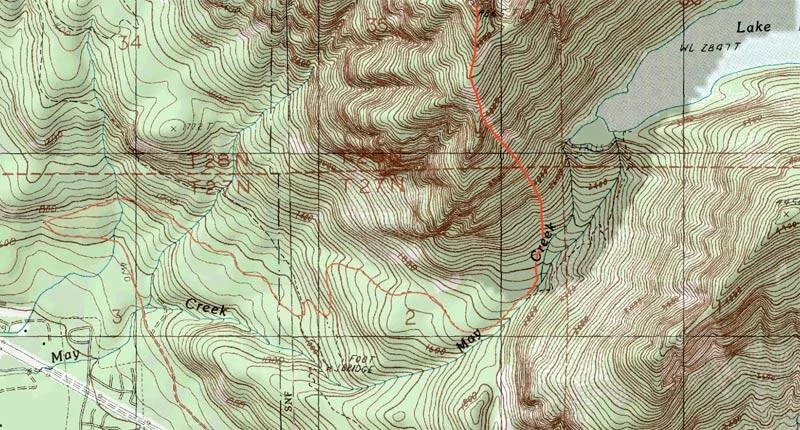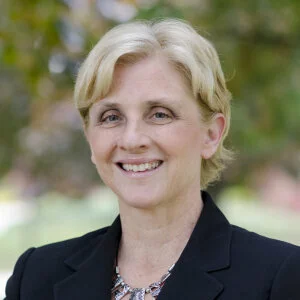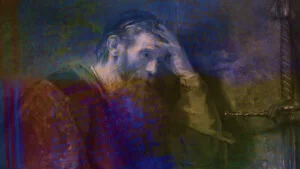Mr. Stets, my 7th grade Earth Science teacher, introduced our class to the world of topographic maps. I remember him saying, “Topography is the art and science of showing the features of a particular local territory.” I was fascinated by the mapmaker’s ability to represent landscapes with such detail.
Mr. Stets illustrated his teaching using various types of topographic maps. He showed us elevation maps, vegetation and foliage maps, population density maps from different parts of the world, and historical hazard maps that showed geographic regions prone to earthquakes, wildfires, or air pollution. In reflecting on the art and science of topography, I realized that the metaphor also depicts our thoughts about humanity and human interaction.He told us how people used these maps and why they were helpful, but also underscored that each one of these documents by itself could tell only part of the story. In other words, each map depicted a limited amount of information about any given context. The final assignment for Mr. Stets’ class was a simple elevation map, but I’ve since realized that Mr. Stets had taught us about more than map-making; he also instilled in us the skills, patience, and persistence to observe and study a phenomenon and to depict what we saw.
In reflecting on the art and science of topography, I realized that the metaphor also depicts our thoughts about humanity and human interaction. Topography is not merely about the layers and complexity of a local territory, which no one map can adequately explain, but it provides insights on the course of thinking itself, the way in which we are required to “measure and depict” the earth from our own concrete locations and horizons and with multiple levels of complexity.
“Mapping” EA Conversations
In the same way that topographic maps depict one aspect of a particular context, so also our everyday world could be “mapped” into a related but distinct sets of issues such as our varied perspectives on Emerging Adulthood. The substance of our EA conversations are the “maps” that depict these issues. Moreover, just as a topographer’s map emerges through a series of “measurements,” so also do our own “maps” of our contexts emerge with increased complexity and density the more measurements that we take, the more “locations” and “perspectives” that we gather.
The EA conversation that began last spring with a Consortium here at Trinity and that continues today is an example of how this map-making activity can be done in community. We are gaining insights from “map-makers” who view Emerging Adulthood from different locations and who are working on different maps. They are pastors, leaders, students, and faculty who daily interact with this age demographic. Our work together as map-makers has also begun to identify some of the primary maps needing to be developed, maps that are important for understanding the “landscape” of Emerging Adulthood.
As the conversation here at Sapientia gets going, I’d like to summarize a bit about where we’ve come from and where we’re going. What follows is a brief description of three collaborative parts of the map-making process convened with emerging adults and about emerging adulthood.
Map-making Part #1: A Conversation about Emerging Adulthood
Many have observed the tension and lack of meaningful connection that exists between members of different generations, whether at work, at church, or in a family setting. Scholars and practitioners alike are seeking to better understand why this disconnect along generational lines is taking place. Emerging adults (ages 18 to 29) are one group that have acutely felt this intergenerational disconnection. This season of life is filled with critical decision points and pressures that in some ways are very different than previous generations, and these situational differences lead to misunderstandings across generational lines.Cf. Dunn, R. R., & Sundene, J. L., Shaping the Journey of Emerging Adults: Life-Giving Rhythms for Spiritual Transformation. Downers Grove, IL: IVP Books, 2012; Setran, D. P., & Kiesling, C. A., Spiritual Formation in Emerging Adulthood: A Practical Theology for College and Young Adult Ministry. Grand Rapids: Baker Academic, 2013.

EA Consortium participants Kristen Brown socializes during one of the breaks.
The first EA map-making conversation started last spring when more than 100 people gathered to attend The Emerging Adulthood Consortium. Pastors, campus life staff, local business owners, scholars, and graduate students came together to focus on the challenges that emerging adults are facing and how we might intentionally collaborate together in order to better connect with these young people. This diverse mix of emerging adult stakeholders engaged in rich conversation for the purpose of networking, collaborating, and learning from one another. We discussed the broad landscape of emerging adulthood, frameworks for understanding and engaging EAs, intercultural perspectives on EAs, as well as innovative and imaginative models of ministry to and with EAs. We talked about the future and our ongoing questions. Many of the videos and presentations from the main sessions of the consortium are on the Henry Center’s resource page, and Kristen Brown and Meryl Herr both wrote post-consortium reflections for Sapientia. These only represent a small part of all the work and thinking that began there.
Map-making Part #2: Conversations with Emerging Adults
In response to the EA Consortium, we decided to form EA Cohorts to convene deeper conversation with emerging adults, time to listen to and learn from them. To accomplish this, three faculty members—David Setran (Wheaton College), Chris Kiesling (Asbury Theological Seminary), and myself (TEDS)—are each partnering with a seasoned EA Pastor—Lane Young (Youth Pastor, Church of the Resurrection), Sam and Meg Donica (First Alliance Christian and Missionary Alliance), Jeff Root (Associate Pastor, Glen Ellyn Evangelical Covenant Church)—to assemble a small cohort of six or seven emerging adults.
The three EA Cohort groups met together in September and after several hours of stimulating conversation came up with six themes that we will explore over the next six months. The broad topics of conversation will be:
- Success & failure
- Freedom, choices, commitment (moral choices & lifestyles)
- Identity, wholeness, vocation, and how to respond to the pressures from older generations
- Relationships and technology
- Disconnect from local church (faith-belief in action)
- Defining “adulthood” and what that means
These groups will intentionally surface generative questions and explore effective practice as they meet together. Next spring we will have a closing meeting with all three cohorts to bring together what we have collectively learned. We hope to share some of what we’re learning as collaborative mapmakers through Sapientia, which leads us to our third map-making vantage point.
Map-making Part #3: Conversations with Emerging Adults and about Emerging Adulthood
The third map-making community in our larger EA conversation is here at Sapientia. The theological, ecclesial, and cultural reality of Emerging Adulthood is happening all around us. Academics from diverse institutions are researching the topic from sociological, ecclesiological, and theological angles; pastors and other para-church leaders are responding with innovative practices and church models. Emerging Adults, whether they’re aware of the conversation or not, are living their lives within the complex set of realities that confront us in the twenty-first century. (For an excellent engagement with some of these challenges, I encourage you to follow David Setran’s series on “Spiritual Attentiveness,” which begins on Thursday, November 12, and runs through December 17.)
No one owns the EA conversation, but we hope to present one of the more unified and ecclesially minded voices presently available.The web-based conversation that we hope to host here is intended to provide a sustained and intelligent voice describing the EA landscape. No one owns the EA conversation, but we hope to present one of the more unified and ecclesially minded voices presently available. In our map-making we hope to engage in a faithful and humble manner to the pressing challenges that the church and Emerging Adults face in this world.
Besides David Setran, there will be a few other frequent contributors whose thoughts and ideas I trust you will come to appreciate: Rick Dunn (Lead Pastor Fellowship Church), Jana Sundene (Associate Professor of Christian Ministries, Trinity College), Chris Kiesling (Professor of Human Development and Christian Discipleship, Asbury Theological Seminary) and others. These very proficient mapmakers will provide multiple vantage points for reflection and discussion.
While these thinkers might be well-trained map-makers, specializing in the EA landscape, we also know that the terrain is filled with people like yourself, daily immersed in the conversation and issues, both Emerging Adults themselves and those who work closely with Emerging Adults. We hope that you’ll join us in this conversation, also lending your voice to this virtual map-making community.





Comments
Be the first one to make a comment!